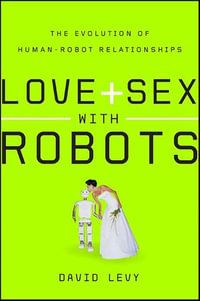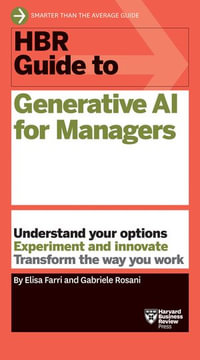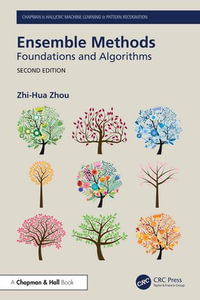
eTEXT
Perceptual Computing
Aiding People in Making Subjective Judgments
By: Jerry Mendel, Dongrui Wu
eText | 16 July 2010 | Edition Number 1
At a Glance
eText
$190.29
Instant online reading in your Booktopia eTextbook Library *
Read online on
Not downloadable to your eReader or an app
Why choose an eTextbook?
Instant Access *
Purchase and read your book immediately
Read Aloud
Listen and follow along as Bookshelf reads to you
Study Tools
Built-in study tools like highlights and more
* eTextbooks are not downloadable to your eReader or an app and can be accessed via web browsers only. You must be connected to the internet and have no technical issues with your device or browser that could prevent the eTextbook from operating.
Lotfi Zadeh, the father of fuzzy logic, coined the phrase "computing with words" (CWW) to describe a methodology in which the objects of computation are words and propositions drawn from a natural language. Perceptual Computing explains how to implement CWW to aid in the important area of making subjective judgments, using a methodology that leads to an interactive device???a "Perceptual Computer"???that propagates random and linguistic uncertainties into the subjective judgment in a way that can be modeled and observed by the judgment maker.
This book focuses on the three components of a Perceptual Computer???encoder, CWW engines, and decoder???and then provides detailed applications for each. It uses interval type-2 fuzzy sets (IT2 FSs) and fuzzy logic as the mathematical vehicle for perceptual computing, because such fuzzy sets can model first-order linguistic uncertainties whereas the usual kind of fuzzy sets cannot. Drawing upon the work on subjective judgments that Jerry Mendel and his students completed over the past decade, Perceptual Computing shows readers how to:
Map word-data with its inherent uncertainties into an IT2 FS that captures these uncertainties
Use uncertainty measures to quantify linguistic uncertainties
Compare IT2 FSs by using similarity and rank
Compute the subsethood of one IT2 FS in another such set
Aggregate disparate data, ranging from numbers to uniformly weighted intervals to nonuniformly weighted intervals to words
Aggregate multiple-fired IF-THEN rules so that the integrity of word IT2 FS models is preserved
Free MATLAB-based software is also available online so readers can apply the methodology of perceptual computing immediately, and even try to improve upon it. Perceptual Computing is an important go-to for researchers and students in the fields of artificial intelligence and fuzzy logic, as well as for operations researchers, decision makers, psychologists, computer scientists, and computational intelligence experts.
Read online on
ISBN: 9780470599631
ISBN-10: 0470599634
Published: 16th July 2010
Format: PDF
Language: English
Publisher: Wiley Professional Development (P&T)
Edition Number: 1























